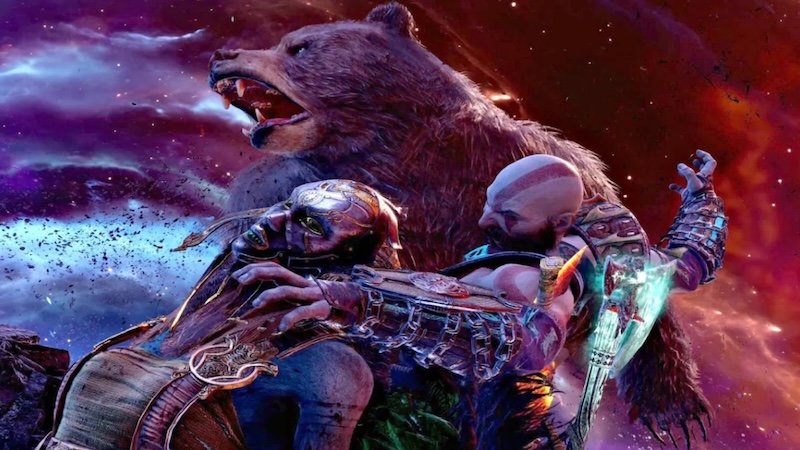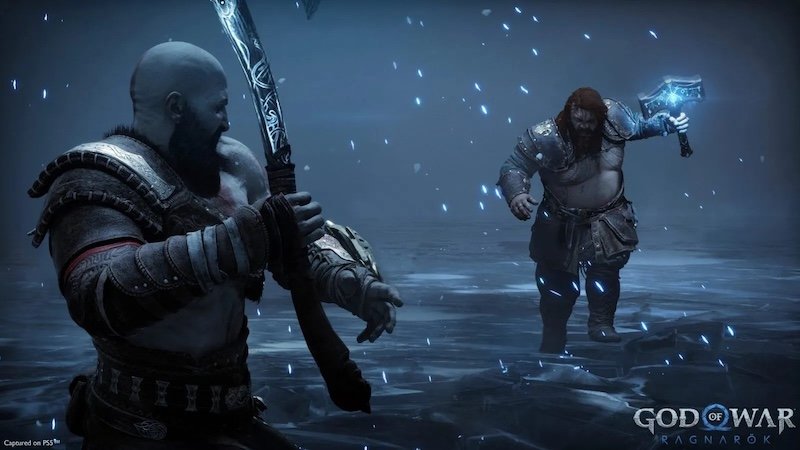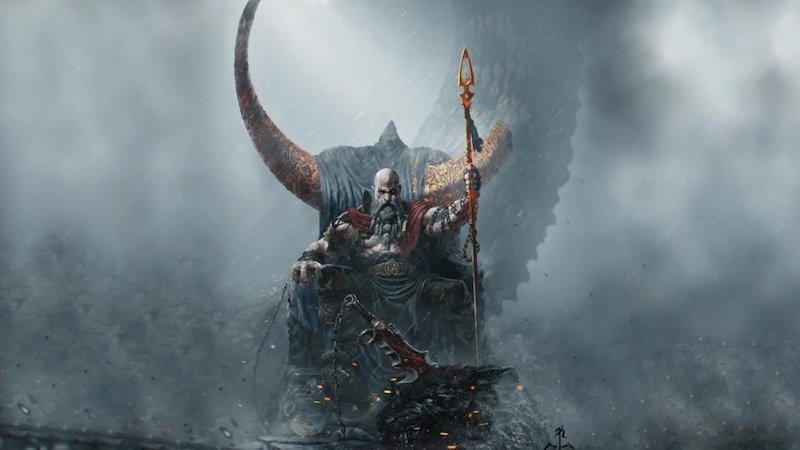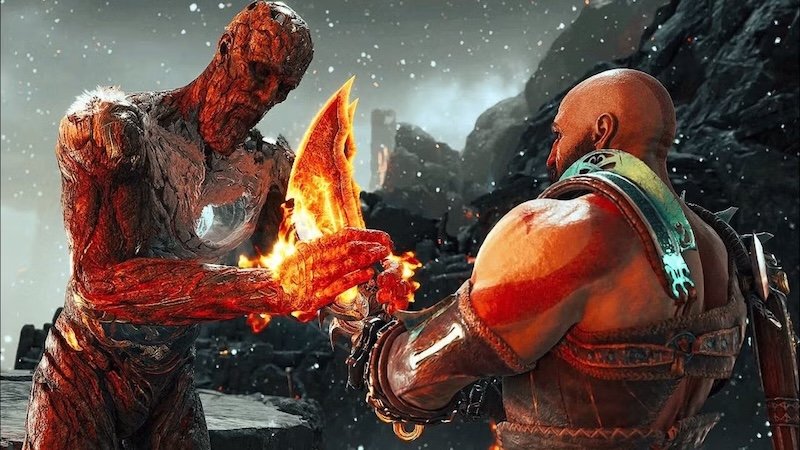GodofWar Ragnarök adopted a few new systems and designs for the series. Still there’s one system or design that should make a return in future entries. With the God of War Ragnarok game 2018, Santa Monica ushered in a brand-new era for the franchise. This brand new era contains interesting themes, story, character development, and, arguably most importantly, gameplay.
The original series’ hack-and-slash, power fantasy, set piece-heavy gameplay loop holds a special place in the hearts of many fans God of War Ragnarök PS4 Launch Edition. They tried something new: 3rd-person, over-the-shoulder camera & Soulslike combat. It built upon the series’ foundation, introducing new mechanics, open-world design, and a third weapon for Kratos.

The Evolution of the God of War Series
The “God of War” series originated in 2005 as a high-octane, action-packed experience on the PlayStation 2. It introduced players to Kratos, a Spartan warrior who embarked on a quest for revenge against the gods of Olympus. The original games were known for their relentless combat, cinematic boss battles, and boldly brutal and vengeful protagonists. These early titles firmly established the series as a flagship of action-adventure gaming. These features allowed it winning numerous awards and amassing a dedicated fan base.
Shift in Gameplay and Storytelling with the 2018 Reboot
In 2018, the series underwent a monumental transformation with the release of “God of War” for the PlayStation 4. This reboot marked a significant departure from the series’ traditional gameplay style. It introduced a new camera perspective, moving from fixed isometric angles to an over-the-shoulder third-person view. This shift allowed for a more intimate and immersive experience, emphasizing close combat and exploration.
However, it wasn’t just the gameplay that evolved; the narrative underwent a profound transformation. The story shifted its focus from Kratos’ insatiable rage and revenge to a more nuanced exploration of his character. It also tackeld the themes of fatherhood, redemption, and personal growth.
Kratos, once a one-dimensional rage-driven warrior, became a complex and relatable character. He now had to come to terms with his past actions and responsibilities as a father. This shift in storytelling elevated “God of War” from being merely a hack-and-slash adventure to a deeply emotional and thought-provoking narrative.

The Best of Strategy Games: Best Tips to Start in Company of Heroes 3
The Impact of GodofWar Ragnarök in the Series
The upcoming game part in the series promises to continue the narrative journey that began in 2018. This part is highly anticipated as it builds on the character development and world-building introduced in the previous game. It further sets the series’ evolution. This evolution hints that the trend towards more intricate storytelling, rich character development. Furthermore it creates a deeper connection with the player is set to continue.
The “God of War” series has come a long way. In its origins it was as a visceral hack-and-slash franchise. Now it transforms into a character-driven, narrative-driven experience. The evolution of the series has not only garnered applause but has also kept fans eagerly awaiting each new installment. Because of this evolution, players are excited to see how Kratos’ journey and the world of “God of War” will continue to evolve.
Making Valhalla in GodofWar Ragnarök the Ultimate Challenge
For now, it has been confirmed that the spirits of Valhalla, known as the Einherjar, will serve as enemies in GodofWar Ragnarök. It is also said in the previous game that the Aesir gods also return to Valhalla when they die.
This means that Valhalla has the potential to host a Boss Rush mode in the highly anticipated sequel. This time around Kratos and Atreus will be facing all of the gods they previously killed. It may include bosses like Baldur, Magni, Modi, and possibly others like Thor or Heimdall. In this GodofWar Ragnarök installment it boasts a greatly expanded lineup of both standard enemies and bosses. Hence there will likely be no shortage of godly enemies to fill the tables of Valhalla with opponents for Kratos to challenge.
Returning of Gods from Death
Kratos and Atreus could maybe face past bosses again towards the end of the sequel’s story, with the duo possibly fighting through Valhalla to reach Asgard itself. A Boss Rush in Valhalla would also make an interesting optional challenge mode, like Muspelheim and Niflheim in the series’ 2018 entry. This would let Valhalla’s inhabitants pose a truly intimidating endgame threat, ironically taking the place of the previous game’s Valkyrie bosses.
God of War Ragnarök Steam promises to be far larger than its 2018 predecessor, and exploring new realms in GodofWar Ragnarök will play a major role in making the journey feel even grander. While a trip to Asgard itself will indeed play a role in the game’s climax, Valhalla holds even more potential for unique and exciting gameplay. With old bosses like Baldur, Magni, and Modi likely hanging around in the mythic halls of Valhalla, the iconic locale would be a perfect place to fit a Boss Rush mode into God of War Ragnarök.

The Trend in Question God of War Ragnarök.
The trend that God of War Ragnarok and the series as a whole need to continue is the profound shift towards character-driven storytelling, world-building, and thematic depth. This trend has marked a departure from the series’ origins as a pure hack-and-slash action-adventure and has seen the franchise embrace a more mature and emotionally resonant narrative.
Narrative Depth
The significance of this trend lies in the narrative depth it brings to the series. By delving into complex themes such as fatherhood, redemption, and personal growth, the games have excelled in the typical action-adventure genre, offering players a more substantial and emotionally engaging experience.
Character Development
The transformation of Kratos from a one-dimensional rage-driven warrior into a multi-dimensional character with layers of complexity has been pivotal. Players can now relate to and empathize with Kratos, making his journey more relatable and compelling.

World-Building in GodofWar Ragnarök
The trend has also expanded the world of “God of War.” The series has moved beyond Greek mythology and into the realms of Norse mythology, introducing players to new gods, creatures, and realms. This expansion not only enriches the lore but also provides a fresh and engaging setting for the games.
The Best Guid to Side Quests in Dead Island 2
Player Engagement
Furthermore, this new trend has made players feel more connected to the games and their characters. It prompts players to invest emotionally in the story and its outcomes, resulting in a more immersive and unforgettable gaming experience.
Conclusion
God of War Ragnarök needs to continue the trend of pushing the boundaries of storytelling, gameplay, and character development. The series has always been known for its epic action and intense combat, but it has also excelled in delivering emotionally impactful narratives and deepening the relationship between Kratos and Atreus.
By maintaining this focus on rich storytelling and character growth, future installments can continue to captivate players and keep them invested in the journey. Additionally, the game should continue to innovate with its gameplay mechanics, offering new challenges and surprises to keep players engaged. The future of the God of War series is inspiring.

0 Comments